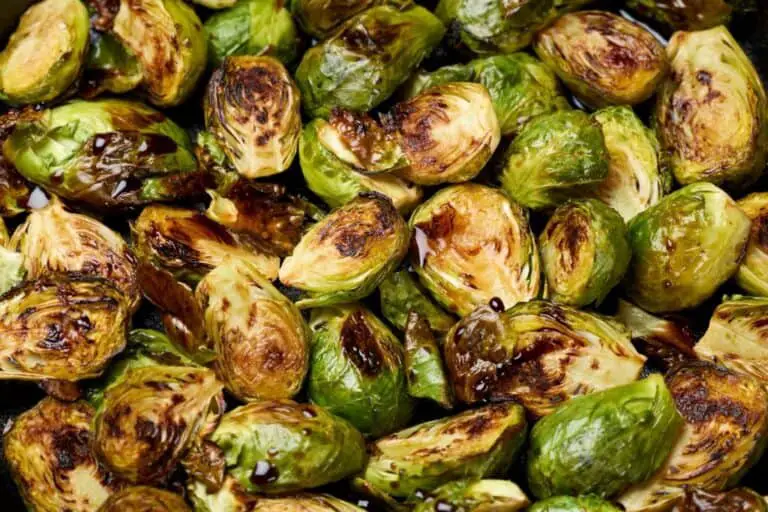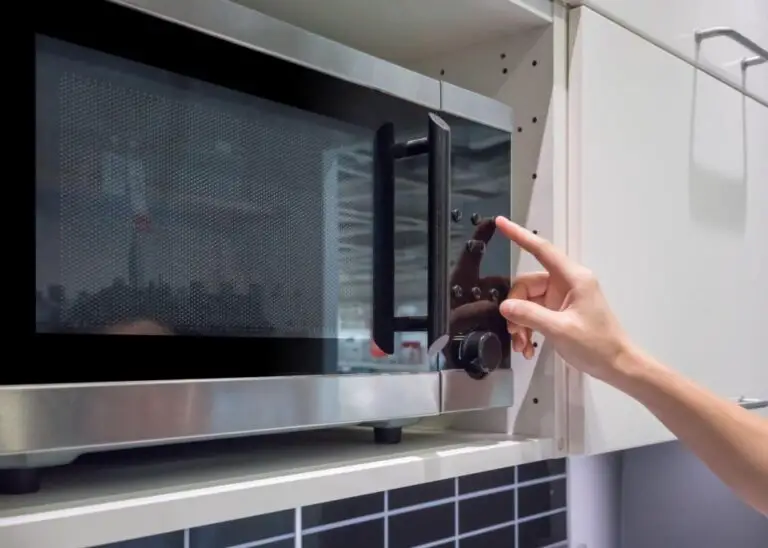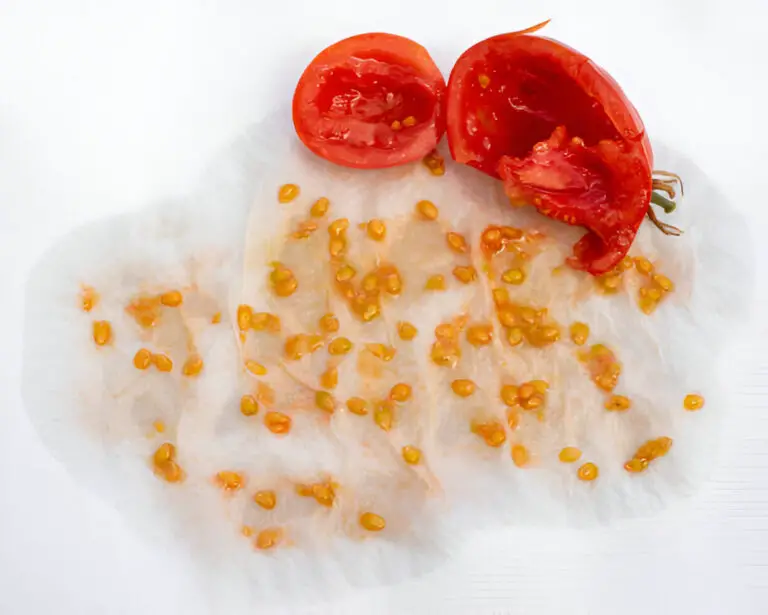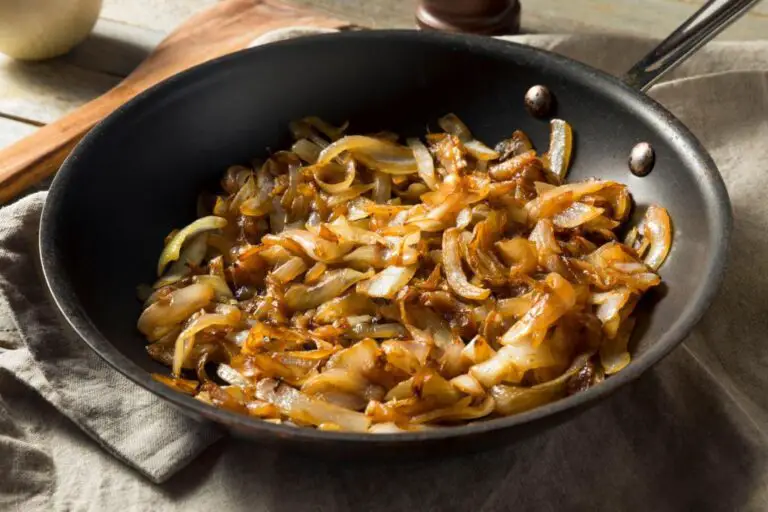How to Reheat Gammon without Drying It Out (Keeping Its Juicinness)

Gammon—succulent, tender, and bursting with flavor—deserves to be savored, no matter when it’s served. Whether you’ve made a glorious roast for Sunday dinner or you’re working with leftovers from a holiday feast, gammon can be a tricky one to reheat. One wrong move, and you’re left with a dry, tough piece of meat that no amount of gravy will fix.
But fear not, my fellow food lover, because I’ve cracked the code. Reheating gammon without drying it out and preserving its juiciness is totally doable, and I’m about to share my top methods with you. Trust me, these tricks will make sure your gammon tastes just as good (if not better) as the first time around.
Why Does Gammon Dry Out?
Before we dive into the solutions, let’s take a quick peek at why gammon dries out in the first place. The main culprit? Heat. When reheating, it’s easy to apply too much heat too quickly, causing the meat’s juices to evaporate and leaving it dry. Gammon is a cut of pork that’s already been cured and cooked, so it doesn’t need a lot of time in the heat. All we need to do is heat it up gently, keeping those flavors and juices locked in. The key is patience and the right technique.
Now, let’s roll up our sleeves and dive into the best ways to reheat gammon while maintaining its tenderness and moisture.
1. Reheating Gammon in the Oven (Slow and Steady Wins the Race)
The oven is my go-to method for reheating gammon when I want to make sure it stays moist and juicy. Sure, it takes a little longer, but the results are totally worth the wait. The oven allows the gammon to heat up evenly, giving it the time it needs to warm through without drying out.
How to Reheat Gammon in the Oven:
- Preheat the Oven: Set your oven to 300°F (150°C). You don’t want the heat too high, as this can dry out the meat. Low and slow is the key to keeping the gammon juicy.
- Wrap It Up: Place your gammon (whether it’s a slice or a whole joint) on a baking tray. Cover it loosely with aluminum foil. This will trap the moisture inside, creating a steamy environment that keeps the gammon tender.
- Add Some Moisture: Before covering the gammon, you can drizzle a little bit of water, broth, or even some apple juice over it. This extra liquid will help keep the gammon moist while reheating.
- Reheat: Pop the tray into the oven and heat it for around 20 minutes if it’s a small piece or 40 minutes for a larger joint. Check halfway through and add a little more liquid if it looks like it’s drying out.
- Serve: Once heated, remove the foil, slice it up, and serve. Your gammon should be perfectly moist and tender, ready to be devoured!
Pro Tip: If you’re reheating a gammon joint with glaze, apply the glaze halfway through the reheating process. This will allow it to caramelize and create that perfect sticky finish.
2. Using a Stovetop: The Quick Fix for Gammon Slices
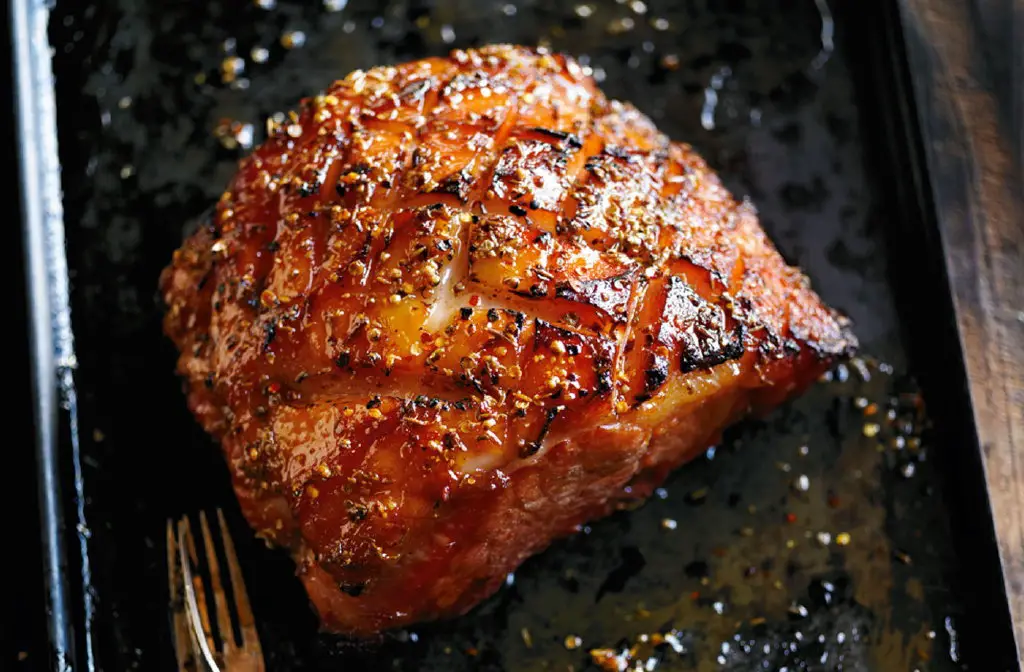
If you’re short on time or you’ve only got a slice of gammon to reheat, the stovetop method is your best friend. It’s quick, efficient, and gives you a bit of control over the heat to prevent drying.
How to Reheat Gammon on the Stovetop:
- Prepare the Pan: Heat a non-stick frying pan or skillet over medium heat. You don’t need to add much oil, but a little drizzle of olive oil or butter can give the gammon a nice sear.
- Add Some Liquid: Pour a small amount of water, broth, or juice into the pan. This creates a little steam that will help keep the gammon from drying out. Just a splash—about 2 tablespoons—should be enough.
- Add the Gammon: Place your gammon slice into the pan, then cover it with a lid. This traps the steam and moisture inside, allowing the meat to reheat gently.
- Heat Slowly: Let the gammon warm up for about 4–5 minutes on each side, checking to make sure it doesn’t burn or dry out. The key here is to avoid high heat.
- Serve: Once it’s warmed through, remove it from the pan and serve with your favorite sides.
Pro Tip: For a crispy finish, remove the lid during the last 1–2 minutes of cooking to allow the gammon to crisp up slightly. It’ll add a delightful texture to each bite.
3. Reheating Gammon with the Sous Vide Method (Precision at Its Finest)
Now, if you happen to have a sous vide machine, you’re in for a treat. The sous vide method is one of the best ways to reheat gammon without drying it out because it allows for precise temperature control. It’s like giving your gammon a warm bath that gently reheats it to perfection.
How to Reheat Gammon Using Sous Vide:
- Set Up Your Sous Vide: Fill your sous vide container with water and set it to 140°F (60°C). This is the ideal temperature to reheat gammon without overcooking it.
- Seal the Gammon: Place the gammon in a vacuum-sealed bag or a Ziploc bag with all the air squeezed out. You can add a little bit of broth or juice to the bag if you want to infuse more flavor.
- Heat It Up: Submerge the bag into the water bath and let it heat for 30–60 minutes, depending on the size of your gammon. The beauty of sous vide is that the gammon won’t overcook, no matter how long it stays in the water bath.
- Finish and Serve: Once heated, remove the gammon from the bag. You can serve it as-is, or for a crispy edge, sear it briefly in a hot pan with a little oil.
Pro Tip: Sous vide is especially great if you’re reheating a gammon joint that’s already been glazed. The low temperature helps preserve the flavors without drying out the meat.
4. The Microwave Method (If You Really Have to)
Okay, I’ll admit it—sometimes the microwave is all you’ve got, and that’s okay! It’s not the ideal method for keeping gammon juicy, but with a few adjustments, it can still do the trick.
How to Reheat Gammon in the Microwave:
- Prepare the Dish: Place your gammon slice on a microwave-safe plate. If you’re reheating a large joint, consider cutting it into smaller pieces for more even heating.
- Add Moisture: Drizzle a little water, broth, or apple juice over the gammon. Then cover the plate with a damp paper towel or a microwave-safe lid. The steam helps keep the gammon moist.
- Microwave on Low Power: Set your microwave to 50% power. This helps heat the gammon slowly and prevents it from becoming tough and dry. Heat for 30-second intervals, checking in between until it’s warm all the way through.
- Serve: Once heated, remove the plate from the microwave and serve.
Pro Tip: If your microwave has a “reheat” function, use it. It’s designed for reheating meat, and it’s less likely to overcook your gammon.
| Check out: How to Reheat Turkey from Whole Foods |
5. Reheating Gammon with a Slow Cooker (Set It and Forget It)
If you’re in the mood for a super low-effort method, the slow cooker can be a lifesaver. It’s perfect if you have a whole joint of gammon that you need to reheat slowly over time. This method ensures that your gammon stays juicy, but it does require a bit of patience.
How to Reheat Gammon in the Slow Cooker:
- Set the Slow Cooker: Pour about 1–2 cups of water, broth, or apple juice into the slow cooker. You can also throw in some herbs or spices for extra flavor if you want.
- Add the Gammon: Place the gammon joint into the slow cooker. Make sure it’s not submerged in liquid; the goal here is for the gammon to steam gently.
- Cook on Low: Set the slow cooker to low and let it heat for 1.5–2 hours. You don’t need to check it every five minutes—just let it work its magic.
- Serve: Once the gammon is heated, take it out of the slow cooker, slice, and serve. It should be warm, tender, and juicy.
Final Thoughts: Juicy Gammon, Every Time
Reheating gammon without drying it out isn’t as tricky as it sounds—provided you know the right methods. Whether you choose the oven for slow and steady heat, the stovetop for a quick fix, or the sous vide method for precision, you can preserve the juiciness and flavor of gammon without much effort.
The key takeaway? Keep the heat low and slow, and make sure the gammon stays covered or has some added moisture to retain its juicy goodness. So, next time you find
FAQs on How to Reheat Gammon without Drying It Out
Can I reheat gammon more than once?
It’s best to avoid multiple reheating cycles to prevent further moisture loss. If reheating leftovers, aim to consume them within 2 days.
Can I freeze reheated gammon?
While possible, freezing reheated gammon may alter its texture. It’s advisable to freeze the gammon before reheating for optimal taste and texture upon thawing.

